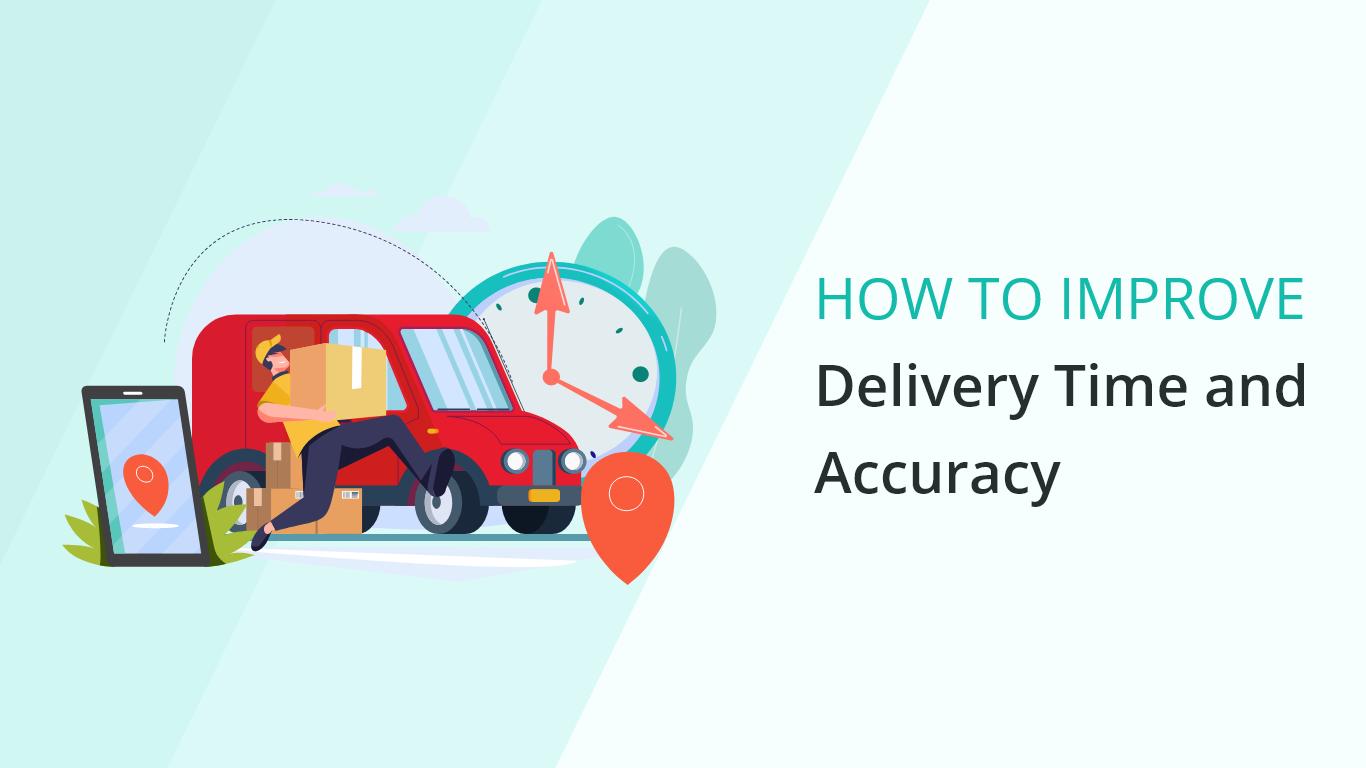In today’s fast-paced world, accurate route planning has become a crucial factor in ensuring efficient delivery of goods. Delivery drivers play a key role in the supply chain by transporting products from one location to another, and the success of a delivery largely depends on the accuracy of their estimated time of arrival (ETA) at the destination.
The last mile delivery is often the most challenging part of the delivery process, and accurate ETAs are critical for meeting customer expectations and ensuring customer satisfaction. By providing delivery drivers with the tools they need to understand the most efficient route and adjust routes in real-time, they can make more efficient deliveries and improve ETA accuracy.
How to Improve Delivery Time Efficiency with Accurate ETA Estimates?
Improving delivery time efficiency with accurate Estimated Time of Arrival (ETA) estimates is crucial for businesses in the logistics and transportation industry. Accurate ETAs help you meet customer expectations, optimise resource allocation, and streamline operations. Here are some strategies to enhance ETA accuracy and delivery time efficiency:
- Utilise Advanced Routing and Scheduling Software:
Invest in modern route optimization and scheduling software that uses real-time data and algorithms to calculate ETAs based on traffic, weather, road conditions, and historical data. - Integrate GPS:
Equip your vehicles with GPS tracking to monitor their location, speed, and other relevant data. Integrate this information with your routing software for real-time updates. - Collect Real-Time Data:
Continuously gather and update data on traffic conditions, road closures, accidents, and weather. Use APIs or data feeds from sources like Google Maps for accurate real-time information. - Machine Learning and Predictive Analytics:
Implement machine learning algorithms to analyse historical data and predict potential delays. This can help adjust ETAs proactively. - Driver Feedback and Communication:
Encourage drivers to provide feedback on their routes and delivery times. Their insights can help identify bottlenecks and improve future ETAs. - Dynamic Routing and Re-Routing:
Enable dynamic route adjustments based on real-time data. If a delay is detected, the system should automatically reroute the vehicle to minimise the impact on delivery times. - Customer Communication:
Keep customers informed about the status of their deliveries. Provide real-time updates via SMS, email, or a tracking portal. Transparency can help manage expectations. - Traffic Management:
Collaborate with local authorities or use traffic management solutions to reduce congestion and delays in high-traffic areas. - Regularly Update ETAs:
Continuously update ETA estimates as new data becomes available. The more frequently you update ETAs, the more accurate they will be. - Data Validation and Quality Assurance:
Ensure that the data you use for ETA calculations is accurate and up-to-date. Regularly validate and clean your data sources. - Feedback Loop:
Establish a feedback loop that allows drivers and dispatchers to report discrepancies between estimated and actual delivery times. Use this feedback to refine your ETA calculations. - Performance Metrics:
Monitor key performance indicators (KPIs) related to delivery times, such as on-time delivery rates and ETA accuracy. Use these metrics to identify areas for improvement. - Continuous Improvement:
ETA accuracy is an ongoing process. Continuously evaluate and refine your ETA estimation methods and technologies to stay ahead of changing conditions and customer expectations.
Provide accurate delivery time with LogixPlatform!
A delivery management software like LogixPlatform can increase delivery effectiveness and ETA estimation precision. With features like real-time tracking, route optimization, and automated dispatching, dispatchers can optimise delivery schedules and assign the right drivers to the right deliveries.
Dispatchers can change delivery routes in real time to account for any unexpected delays because of LogixPlatform ‘s ability to link with GPS and mapping programs, which gives them access to exact location data and constant traffic updates. Additionally, LogixPlatform enables continuous monitoring and evaluation of performance, allowing dispatchers to identify problem areas, and adjust routes to improve the accuracy of ETA forecasts.
With LogixPlatform, you get access delivery optimization features like live order tracking, real-time route modification, workload balancing, and more. They help you keep your fleet of drivers consistently delivering on time. You will also avoid failed deliveries caused by bad communication, with real-time order data right there in the app. To know more about the LogixPlatform Delivery Management Software , its functionalities, and features Contact us.









